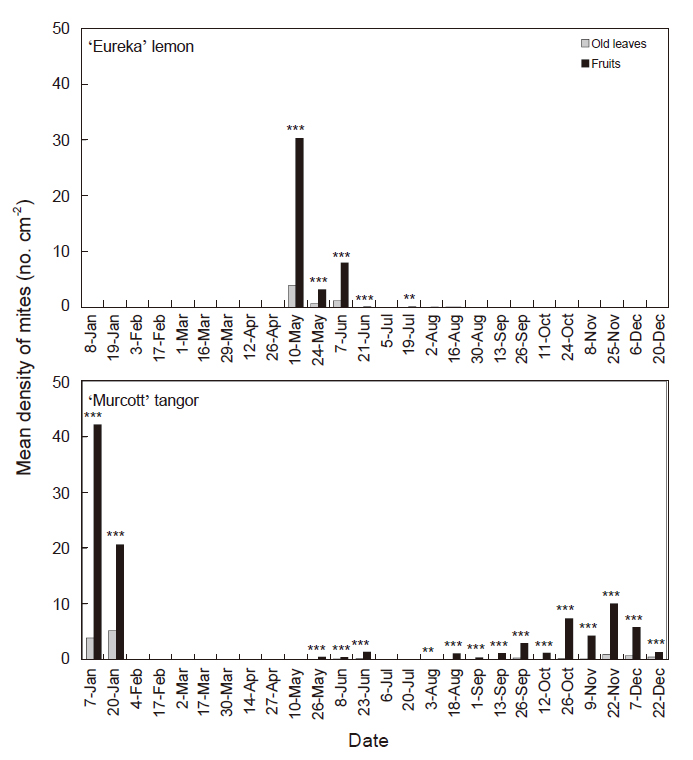All issues

Author:Po-Hung Chen, Tai-Chuan Wang, Chi-Nan Chen, Chiung-Hui Huang, and Shou-Horng Huang*
Abstract:
The citrus rust mite, Phyllocoptruta oleivora (Ashmead), is a major pest of citrus plants in Taiwan. Citrus rust mites feed on leaves and fruit surfaces, significantly affecting the quality of citrus products. The present study investigated the field population dynamics and spatial distribution of citrus rust mites on ‘Eureka’ lemons, ‘Persian’ limes, and ‘Murcott’ tangors from January to December in 2016. Study results regarding the three varieties of citrus plants showed that citrus rust mite populations reached the highest density during fruit growing periods. Fruits suffered the highest density of mite infestations and followed by mature leaves, and young leaves suffered the least damage. The number of citrus rust mites on the lower surface of leaves were higher than that on the upper surface of leaves. The direction of fruits growing on citrus plants did not significantly affect the number of citrus rust mites population. Rainfall and precipitation frequency may be one of the key factors causing low density of mites from May to October. Three indices (index of dispersion, Lloyd’s index of mean crowding and Lloyd’s index of patchiness) used to identify the spatial distribution pattern of citrus rust mites all indicated contagious patterns of spatial distribution except when mite density was very low, the distribution patterns became regular or random.
Key words: Citrus rust mite, Population dynamic, Spatial distribution
Download:![]() PDF Links
PDF Links
- 1. Development of Tractor-Mounted Seedling Transplanter for Sweet Potato
- 2. Synergistic Effect of Additional Gas on the Toxicity of Phosphine to Sitophilus oryzae and Sitophilus zeamais (Coleoptera: Dryophthoridae)
- 3. Effects of Temperature and Solar Radiation on Growth Traits and Plant Elements in Purple Leafy Sweet Potato
 Submit your manuscript
Submit your manuscript
 Guide for authors
Guide for authors